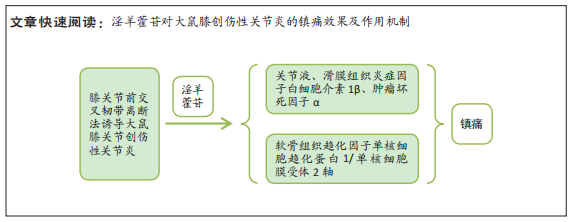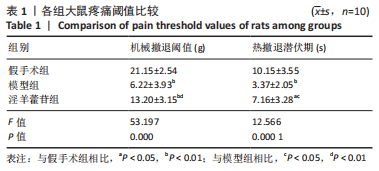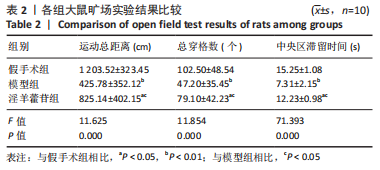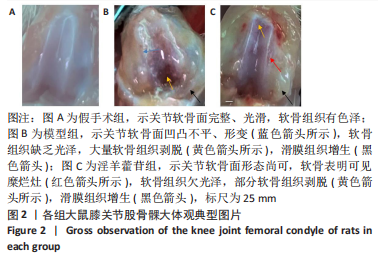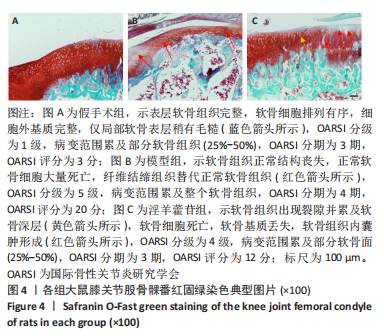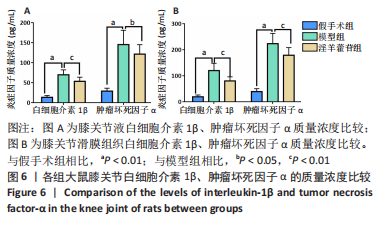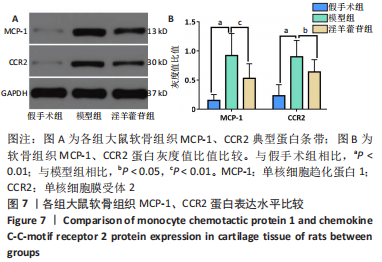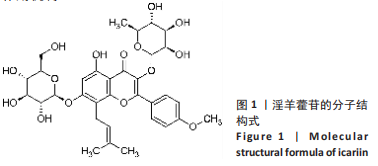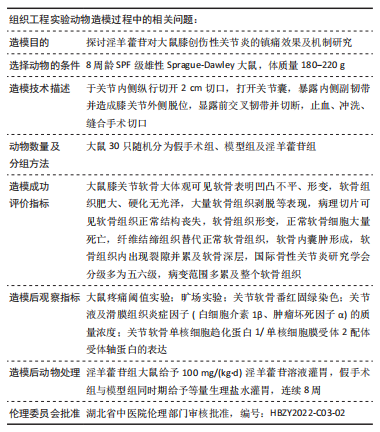[1] KHELLA CM, HORVATH JM, ASGARIAN R, et al. Anti-Inflammatory Therapeutic Approaches to Prevent or Delay Post-Traumatic Osteoarthritis (PTOA) of the Knee Joint with a Focus on Sustained Delivery Approaches. Int J Mol Sci. 2021;22(15):8005.
[2] BANNURU RR,OSANI MC,VAYSBROT EE, et al. OARSI guidelines for the non-surgical management of knee, hip, and polyarticular osteoarthritis. Osteoarthritis Cartilage. 2019;27(11):1578-1589.
[3] MOBASHERI A, REGINSTER JY. Non-surgical management of knee osteoarthritis: comparison of ESCEO and OARSI 2019 guidelines. Nat Rev Rheumatol. 2021;17(1):59-66.
[4] RAUSCH AK, NIEDERMANN K, BRAUN J ,et al. 2018 EULAR recommendations for physical activity in people with inflammatory arthritis and osteoarthritis. Ann Rheum Dis. 2018;77(9):1251-1260.
[5] RAVALLI S, SZYCHLINSKA MA, LEONARDI RM, et al. Recently highlighted nutraceuticals for preventive management of osteoarthritis. World J Orthop. 2018;9(11):255-261.
[6] COMBLAIN F, SERISIER S, BARTHELEMY N, et al. Review of dietary supplements for the management of osteoarthritis in dogs in studies from 2004 to 2014. J Vet Pharmacol Ther. 2016;39(1):1-15.
[7] LIU X, EYLES J, MCLACHLAN AJ, et al. Which supplements can I recommend to my osteoarthritis patients? .Rheumatology (Oxford). 2018; 57(suppl_4):iv75-iv87.
[8] SETTON LA, ELLIOTT DM, MOW VC. Altered mechanics of cartilage with osteoarthritis: human osteoarthritis and an experimental model of joint degeneration. Osteoarthritis Cartilage. 1999;7(1):2-14.
[9] TANG XF, LI XX, CHEN YH, et al. Combination of icariin and oleanolic acid attenuates in vivo and in vitro glucocorticoid resistance through protecting dexamethasone-induced glucocorticoid receptor impairment. RSC Advances. 2018;8(1):230-242.
[10] 邹志余,周劲松,肖昆林,等.姜黄素对单碘乙酸诱导的膝骨关节炎大鼠的治疗作用[J]. 西安交通大学学报(医学版),2020,41(2): 299-303.
[11] PRITZKER KP, GAY S, JIMENEZ SA, et al. Osteoarthritis cartilage histopathology: grading and staging. Osteoarthritis Cartilage. 2006; 14(1):13-29.
[12] CHEN M, GU X, XING D, et al. Guidelines for the diagnosis and treatment of osteoarthritis in China (2019 edition). Ann Transl Med. 2020;8(19):1213.
[13] O’NEILL TW, MCCABE PS, MCBETH J. Update on the epidemiology, risk factors and disease outcomes of osteoarthritis. Best Pract Res Clin Rheumatol. 2018;32(2):312-326.
[14] MI B, WANG J, LIU Y, et al. Icariin Activates Autophagy via Down-Regulation of the NF-κB Signaling-Mediated Apoptosis in Chondrocytes. Front Pharmacol. 2018;6(9):605.
[15] LIU DH, WU PY, JIAO F, et al. Icariin inhibits chondrocyte apoptosis and angiogenesis by regulating the TDP-43 signaling pathway. Mol Genet Genomic Med. 2019;7(4):e00586.
[16] LIU D, TANG W, ZHANG H, et al. Icariin protects rabbit BMSCs against OGD-induced apoptosis by inhibiting ERs-mediated autophagy via MAPK signaling pathway. Life Sci. 2020;15(253):117730.
[17] TANG Y, LI Y, XIN D, et al. Icariin alleviates osteoarthritis by regulating autophagy of chondrocytes by mediating PI3K/AKT/mTOR signaling. Bioengineered. 2021;12(1):2984-2999.
[18] WANG G, ZHANG L, SHEN H, et al. Up-regulation of long non-coding RNA CYTOR induced by icariin promotes the viability and inhibits the apoptosis of chondrocytes.BMC Complement Med Ther. 2021; 21(1):152.
[19] ZENG L, RONG XF, LI RH, et al. Icariin inhibits MMP‑1, MMP‑3 and MMP‑13 expression through MAPK pathways in IL‑1β‑stimulated SW1353 chondrosarcoma cells. Mol Med Rep. 2017;15(5):2853-2858.
[20] ZUO S, ZOU W, WU RM, et al. Icariin Alleviates IL-1β-Induced Matrix Degradation By Activating The Nrf2/ARE Pathway In Human Chondrocytes. Drug Des Devel Ther. 2019;21(13):3949-3961.
[21] 吴海,庞坚,陈博,等.膝骨关节炎患者焦虑与抑郁情绪的调查[J].中国医药导报,2018,15(15):47-50.
[22] AHN H, WEAVER M, LYON D, et al. Depression and pain in Asian and white Americans with knee osteoarthritis. J Pain. 2017;18(10): 1229-1236.
[23] WOODELL-MAY JE, SOMMERFELD SD. Role of Inflammation and the Immune System in the Progression of Osteoarthritis. J Orthop Res. 2020;38(2):253-257.
[24] LIEBERTHAL J, SAMBAMURTHY N, SCANZELLO CR. Inflammation in joint injury and post-traumatic osteoarthritis. Osteoarthritis Cartilage. 2015;23(11):1825-1834.
[25] WATT FE. Posttraumatic osteoarthritis: what have we learned to advance osteoarthritis? Curr Opin Rheumatol. 2021;33(1):74-83.
[26] ROBINSON WH, LEPUS CM, WANG Q, et al. Low-grade inflammation as a key mediator of the pathogenesis of osteoarthritis. Nat Rev Rheumatol. 2016;12:580-592.
[27] SCANZELLO CR. Chemokines and inflammation in osteoarthritis: insights from patients and animal models. J Orthop Res. 2017;35:735-739.
[28] TANG CH, HSU CJ, FONG YC. The CCL5/CCR5 axis promotes interleukin-6 production in human synovial fibroblasts. Arthritis Rheum. 2010;62(1):3615-3624.
[29] LIN YM, HSU CJ, LIAO YY, et al. The CCL2/CCR2 axis enhances vascular cell adhesion molecule-1 expression in human synovial fibroblasts. PLoS One. 2012;7(1):e49999.
[30] RAGHU H, LEPUS CM, WANG Q, et al. CCL2/CCR2, but not CCL5/CCR5, mediates monocyte recruitment, inflammation and cartilage destruction in osteoarthritis. Ann Rheum Dis. 2017;76(5):914-922.
[31] BIANCONI V, SAHEBKAR A, ATKIN SL, et al. The regulation and importance of monocyte chemoattractant protein-1. Curr Opin Hematol. 2018;25(1):44-51.
[32] ZHANG K, LUO J. Role of MCP-1 and CCR2 in alcohol neurotoxicity. Pharmacol Res. 2019;139:360-366.
|
